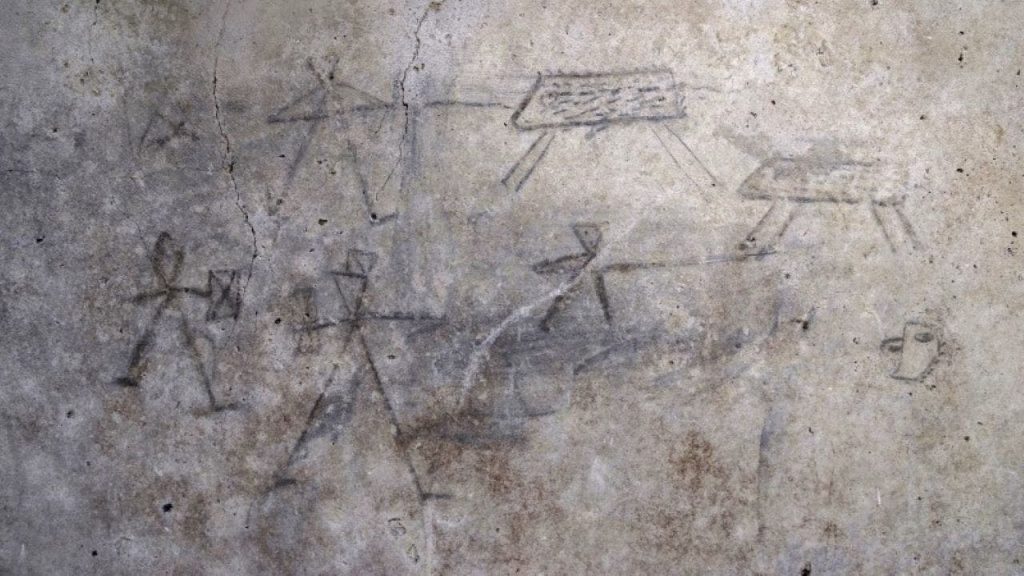Archaeologists in Italy recently uncovered 2,000-year-old “violent” cartoons drawn by children in ancient Rome. The doodles were found on a wall along the main street of Pompeii, an ancient Roman city that was buried by volcanic ash during the eruption of Mount Vesuvius in 79 AD. The charcoal drawings depict gladiators and hunters, reflecting the violence that children were regularly exposed to in Roman amphitheaters. Historians connected this exposure to violence in antiquity to the violent images that children see in popular media today.
Archaeologist Gabriel Zuchtriegel explained that the cartoons were found in a courtyard where children likely played for entire afternoons and had the possibility of making these drawings, unnoticed by adults. Experts collaborated with the University of Naples Federico II to determine the significance of the images and concluded that they reflected what children saw in real life rather than in art or their imaginations. The drawings of gladiators and animal hunters were made after a direct vision of the events, indicating that very young children, estimated to be 6 or 7 years old, were exposed to extreme forms of violence in Pompeii.
The discovery sheds light on childhood in ancient Roman times and helps to better understand the exposure of children to violence in Roman society. The blood spilled in the arena was real during that time, contrasting with the violent imagery children are exposed to in modern media. Archaeologists emphasized that even very young children were exposed to extreme forms of violence between men and men and animals in the amphitheater of the ancient city. The drawings provide insight into the daily experiences and activities of children living in Pompeii during the Roman era.
The Archaeological Park of Pompeii connected the violent cartoons to the violent imagery children see in video games and social media today, highlighting the longstanding impact of exposure to violence on children’s psycho-mental development. The discovery adds to the knowledge of the daily lives of children in ancient Rome and their exposure to real-life violence. The drawings were made after a direct observation of events, demonstrating that children as young as 6 or 7 years old were exposed to violent scenes in the amphitheaters of Pompeii.
The findings contribute to a deeper understanding of the cultural and societal norms of ancient Roman society, particularly regarding the exposure of children to violence. The Archaeological Park of Pompeii stated that the cartoons provide valuable insights into childhood in ancient times and help to paint a picture of what children experienced in Pompeii during the Roman era. The discovery of the violent cartoons offers a rare glimpse into the daily lives and activities of children in Pompeii, shedding light on the ways in which violence was normalized and integrated into everyday life during that time.
Overall, the discovery of the 2,000-year-old violent cartoons drawn by children in ancient Rome provides a unique window into the experiences of children living in Pompeii during the Roman era. The drawings reflect the exposure of children to violence in Roman society and highlight the ways in which violence was an integral part of daily life in antiquity. The Archaeological Park of Pompeii emphasized the significance of the discovery in understanding childhood in ancient times and connecting it to contemporary issues of violence in popular media.













